Spending time at the tracks ...
Documentation of a mis-spent youth in the early 1980s.
Introduction:
Illustrations from a 1950s textbook on economics.

"This man neglected to prepare for his old age."
Most of his money was squandered on passenger train trips, railway hotels, and photography.

... an' these folks ... well ... they gave up on livin' a long time ago.
He's got soft city hands from countin' money.
When was the last time you saw a sunset, brother?
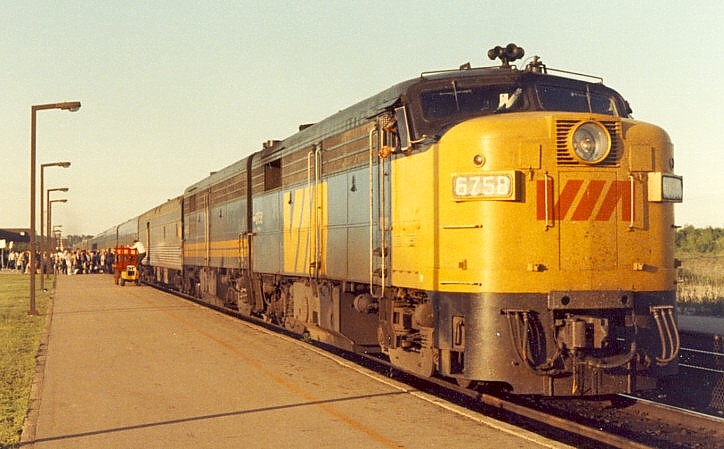
Sunset at Kingston, Ontario in 1982 around 1930hr.
The magic moments just before the brakes release and the throttle opens.
The Montreal-built, Alco-designed locomotive has been in service for 27 years.
Alcos never idled smoothly even right out of the factory ... this is the legend.
For a while VIA's Trains 1/2 "The Canadian" used a Montreal, Kingston, Toronto routing.
This meant that the train was not operated from Montreal, along the Ottawa valley, to Sudbury ...
the traditional CPR routing of The Canadian.
Here, the engineer handling the Kingston to Toronto segment waits for the loading of baggage and passengers.
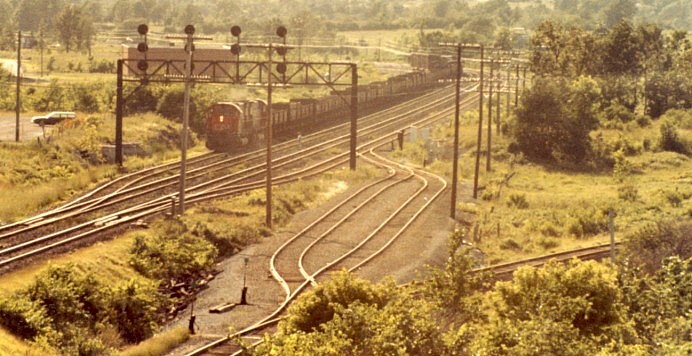
Other American Locomotive Company-designed power included the "Century" line of six-axle, 3000 hp locomotives.
Waiting for a signal to clear for Track 4 at Queens East (at Kingston), on a hot summer afternoon,
a couple of 2300-class Centuries are leading a heavy slag train.
Before environmental concerns arose about the leaching of heavy metals,
slag (waste) from metal smelting was ideal for railway ballast.
The course texture of the slag helped 'lock' it in place when tamped under the track hardware.
Local geography: the two tracks in the centre are the CN/CP "interchange tracks" - where railways swap cars for each other.
Leading off to the extreme right is the CPR branchline up to the CPR mainline at Tichborne, Ontario.
This CPR route once formed part of the Kingston and Pembroke Railway ...
operating from the Kingston city hall to Renfrew, Ontario.
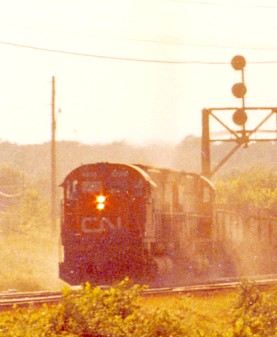
Time to get out of town.
Sand shoots down on the rails.
Traction motor blowers swirl the dust.
Hot exhaust blusters skyward.
The Centuries work to heave the slag into motion.

In October 1985, a couple of VIA trains meet at CNR Bayview Junction between Burlington and Hamilton, Ontario.
Bayview is a track junction of lines from Toronto, London and Niagara Falls, Ontario - among others.
The variety and density of traffic, and the scenery, made this a favourite of railway photographers
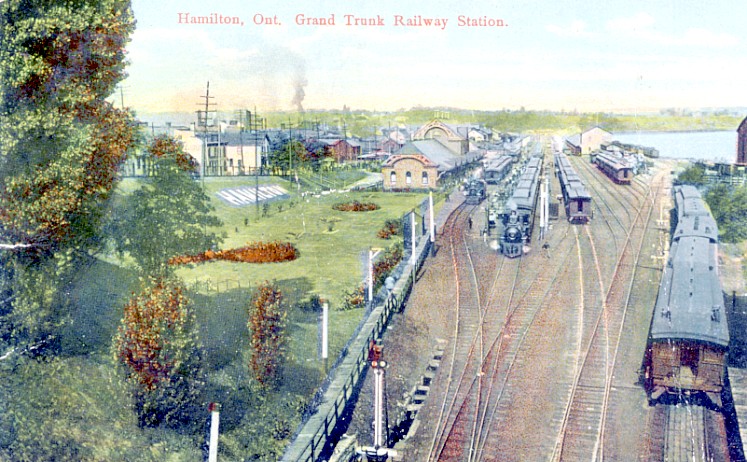
Here is a postcard view of the original Grand Trunk Railway station at Hamilton.
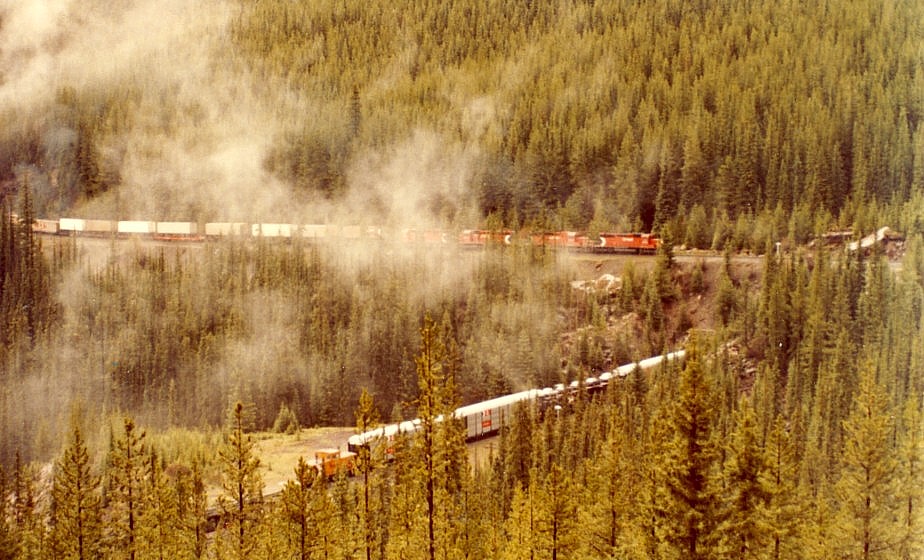
In June 1984 we spent some time staying at the Chateau Lake Louise ...
and in a rental car between the Chateau and Field ... Field and the Chateau ...
following CPR trains over the Continental Divide.
Most of the following photographs are from this 1984 train trip to Vancouver and back.
Where thousands of pictures have already been taken ...
above, 12000 horsepower is lifting a priority freight up to the Continental Divide in the Rockies.
The locomotives are crossing over this eastbound train's own tailend.
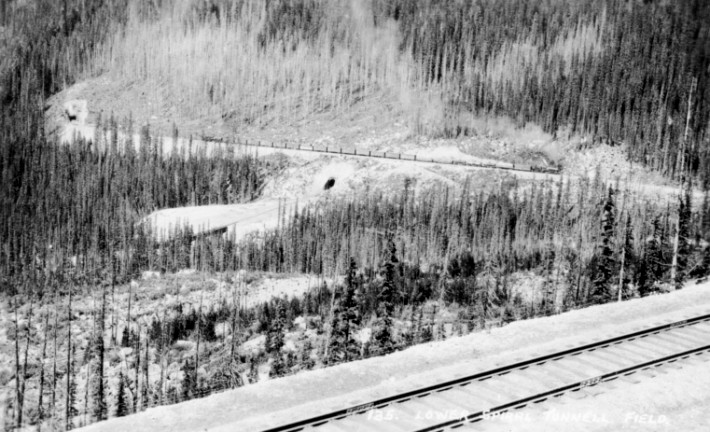
Shortly after their completion, so circa 1920, here again is the lower of the two Spiral Tunnels.
There is a steam locomotive at each end of this short freight train as it climbs eastbound.
To tame the dangerous and expensive 'Big Hill' ...
the CPR increased the length of the track running from the Continental Divide down to Field, B.C.
With mountains everywhere, the track spirals were laid inside tunnels ...
The Spiral Tunnels.
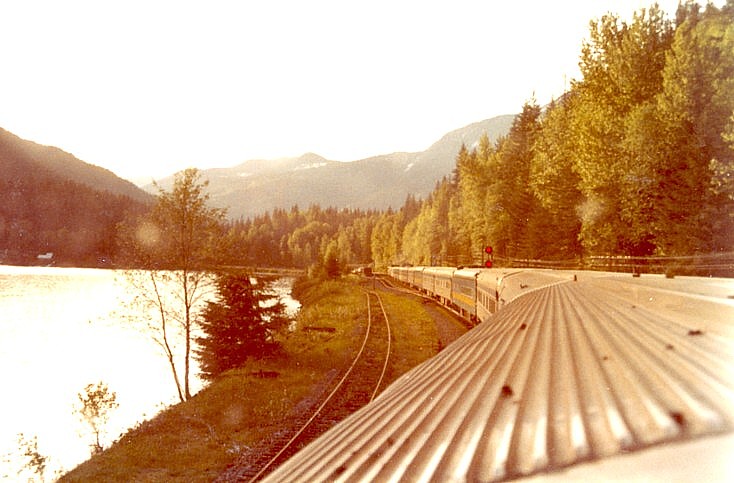
We are back on The Canadian in the tailend dome car on our way west.
Running along Three Valley Lake, we are approaching the site
of the CPR Last Spike at Craigellachie ...
and after that, Salmon Arm, British Columbia.

On a BC Ferry leaving Tsawwassen and headed for Vancouver Island, we look across to the Roberts Bank coal facility.
A long train of metallurgical coal for Japan is being unloaded ... led by 3 red CPR locomotives at the right.
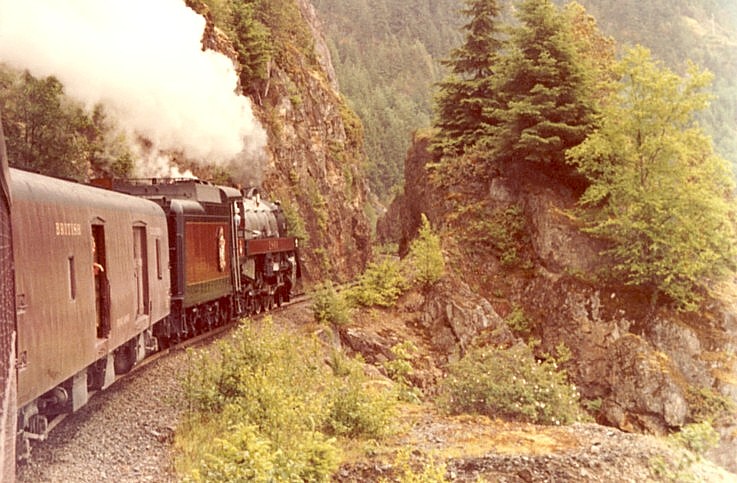
Also built by Montreal Locomotive Works (in 1940 just 15 years before the VIA unit 6758 above)
former CPR oil-fired steam locomotive 2860 leads us back from Squamish to North Vancouver
on the British Columbia Railway's excursion train.
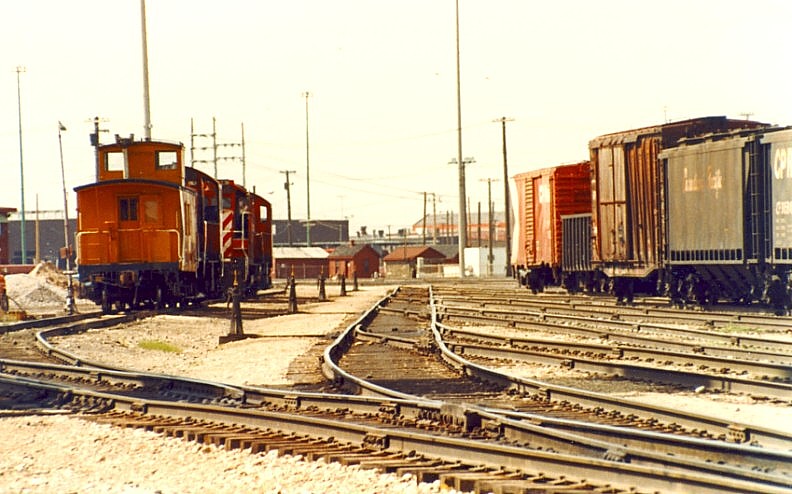
Returning home, and laying over for a visit with my aunt and uncle in Portage,
we are toured around Winnipeg railway facilities - among other attractions.
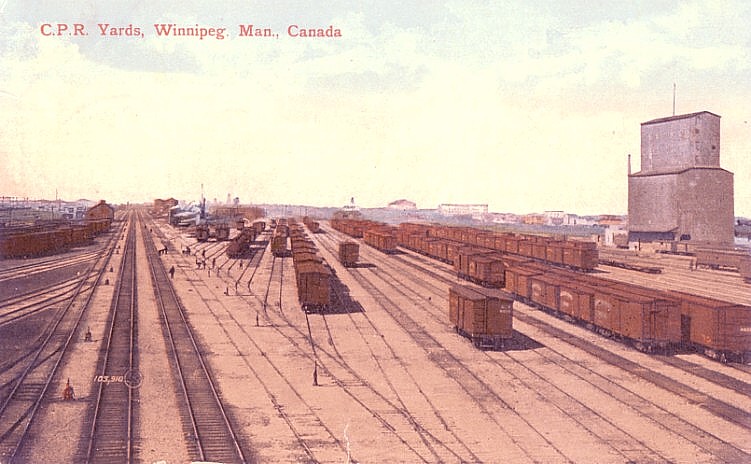
The CPR Winnipeg yards were once the largest in the British Empire/Commonwealth.
Eastbound grain to ... and westbound empty grain boxcars from ... Fort William
put very heavy demands on the system each autumn.
As well, during the early decades of the 1900s,
more than half of Canada's east/west commerce travelled along the double-track CPR mainline at the left.

Photographed from the dome car of The Canadian at Thunder Bay
(near Fort William's former 'Union' Station) ...
two yard switchers built in the late 1950s move between assignments.
Together, these units produced a total of 2400 horsepower.
Coupled electrically and pneumatically, they were operated by a single engineer.
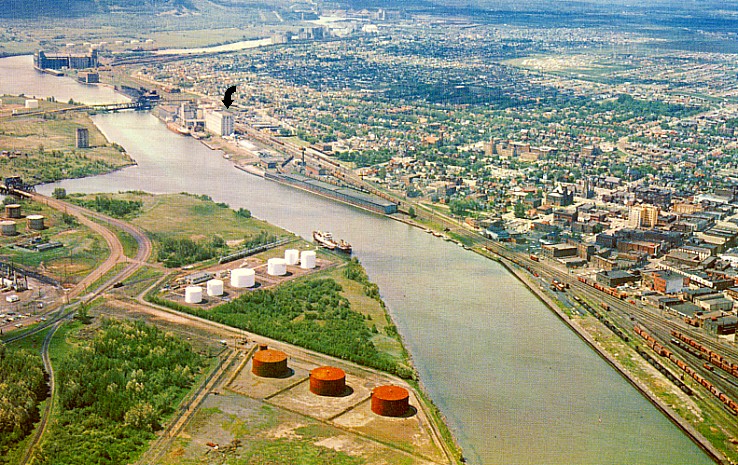
The backdrop (terminal grain elevator) from the previous photograph is shown by a black arrow above.
Our eastbound passenger train would have proceeded from the top left to the lower right of this circa 1965 scene.
The Kaministiquia River also travels toward the lower right corner and Lake Superior.

"The Adventures of Stubby" - the railyard cat !
Today Stubby,
formerly known as 'Lucky'
searches for grain elevator rodents atop a Quonset hut.
You can see all sorts of sights from the dome car !

Sunset at the CPR interchange, near CN Queens East, 1983.
Back to sitemap